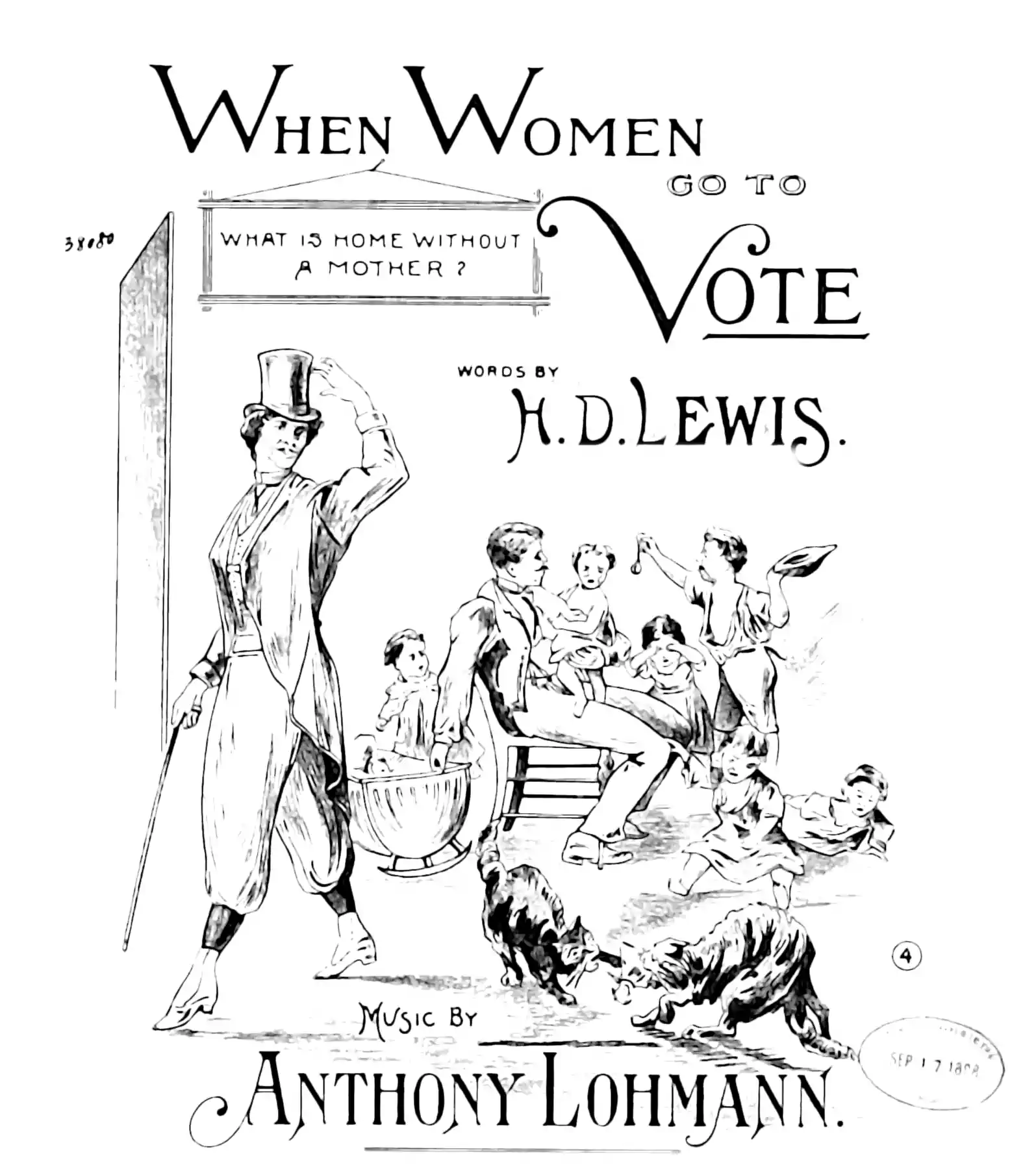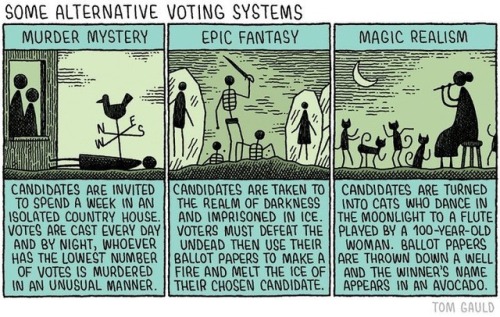Voting systems
Mathematics and economics of aggregate group preferences; the will of the people (whatever that might be); social choice theory
2014-09-22 — 2024-10-06
Wherein it is declared that voting systems are surveyed and impossibility theorems, strategic manipulation, and alternatives such as preferential, approval, quadratic voting and sortition are examined.
Suspiciously similar content
There’s lots of interesting mathematics around this democracy business, and its shortcomings. Insert disclaimers about the complicated relationship between is and ought, and model and actuality. Anyway… I’ll look at that here. Whining about modern democratic failure I’ll leave to capitalism’s end game and practical analysis to psephology.
1 Impossibility results
Arrow-style Impossibility Theorems
Neat summary by Alex Tabarrok:
We know or should always have known that a group doesn’t have preferences anymore than a group smiles. What Arrow showed, however, is that without invoking special cases we can’t even rationalize group choices as if leviathan had preferences. Put differently, the only leviathan that rationalises group choice has the preferences of a madman.”
See also a snappy analysis on Encyclopaedia of math.
The Gibbard-Satterthwaite theorem says, basically, that voting systems are subject to strategic abuse.
C&C Condorcet paradox
C&C Anscombe impossibility
C&C Arrow-Sen
2 Voting systems of note
If we are going to decide a single thing (e.g. who is president) then we are in the realm of classical voting To Build a Better Ballot is Nicky Case’s incredible voting-system visualiser.
tl;dr of the above: there is no perfect voting system, but some are better than others.
2.1 First-past-the-post
a.k.a. plurality. An unbelievably bad way of voting.
Only used by people wh democratised at the wrong momwnt in history and got stuck, or people who don’t think very hard. If your nation-state uses first-past-the-post in 2024 it is an indicator of a deep malaise in your political system, and I am so sorry to hear it. Once you have a first-past-the-post system it is very hard to get rid of it, because the two parties that acquire a duopoly under it have no incentive to change.
2.2 Preferential
a.k.a. ranked-choice, instant-runoff, single transferable vote, etc.
What we use in Australia most often. It’s pretty good, except too hard to explain.
2.3 Proportional
TBC
2.4 Approval voting
An elegant voting system. I heard about it from Aaron Hamlin. Special feature: Easily explained.
TBC
2.5 Condorcet
TBC
3 Iterated voting
If we think that we are in a society where we might decide many things that interact with each other, then we might want to consider iterated voting. I’m sure there are many ways to do this, but the one I have heard most about is Quadratic voting:
Quadratic voting is a rated voting method procedure where voters express the degree of their preferences.[1] By doing so, quadratic voting seeks to address issues of the Condorcet paradox and tyranny of the majority. Quadratic voting works by allowing users to “pay” for additional votes on a given outcome to express their support for given issues more strongly, resulting in voting outcomes that are aligned with the highest willingness to pay outcome, rather than just the outcome preferred by the majority regardless of the intensity of individual preferences. The payment for votes may be through either artificial or real currencies (e.g. with tokens distributed equally among voting members or with real money).[2][1] Quadratic voting is a variant of cumulative voting, which differs in that the weight of a vote is normalised using the sum of squares, rather than the sum of absolute values.
Introduced in Weyl (2017). Made collusion-resistant in Buterin, Hitzig, and Weyl (2019).
4 Sortition
David Chaum makes the case (that I think every statistician thinks is obvious) that Random-Sample Elections are “Far lower cost, better quality and more democratic”
TBC
5 Alternatives to/improvements upon voting for deciding things
Markets? Consensus? Deliberation? Gestalt mass minds? See utopian mechanisms.
6 Incoming
Public choice theory
To write: short necessary disclaimer of the wrong-headedness of the formulation in terms of “optimal” choice for group decisions (economic optimality is only one of the many things that might be desired in a decision-making process; we might also want stability, agency, fairness, etc.)
Iterated Arrow results, for lots of polls. I think this is the Gibbard-Satterthwaite model?
Oligopolistic game theory of the reverse case - what if parties have incentives to offer a shit range of options to the punters; in essence, what if parties systems effectively create cartels? Cost of entry to electoral processes etc.
Voter models: the fusion of statistical mechanics, graph theory, and a semblance of human behaviour
-
RoboVote is a free service that helps users combine their preferences or opinions into optimal decisions. To do so, RoboVote employs state-of-the-art voting methods developed in artificial intelligence research. […]
For subjective preferences, the approach is known as implicit utilitarian voting. We assume that each participant has a (subjective) utility function that assigns an exact utility to each alternative. Our goal is to choose an outcome that maximises utilitarian social welfare, which is the total utility assigned to the outcome by all participants. […] we only ask for a ranking of the alternatives. […]
[…] For objective opinions, let us focus first on the case where the desired outcome is a ranking of the alternatives. We assume that there is a true ranking of the alternatives by relative quality, and our goal is to pinpoint a ranking that is as close as possible to the true ranking, given the available information.
It
implementsimplemented (Boutilier et al. 2015; Caragiannis et al. 2017; Procaccia, Shah, and Zick 2016)

